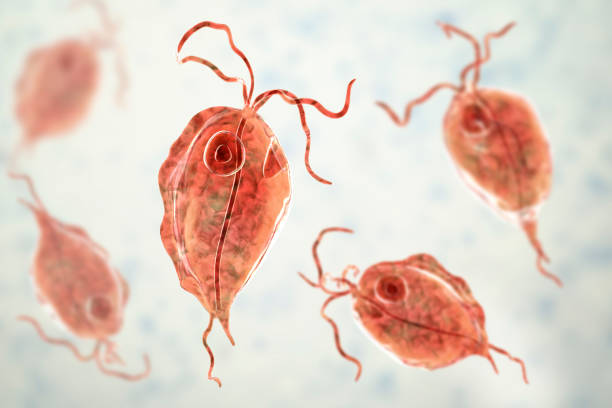7 min read
1228 words
A vaginal infection, also known as Vaginitis, is caused by bacterial or yeast imbalance in the vagina or the surrounding area. The uterus, urinary tract, ovary, and cervix may also be affected. The symptoms associated with vaginal infections usually overlap with each other, thus, self-diagnosis isn’t adequate in most cases. Some vaginal infections are also sexually transmissible. STIs can cause serious damage to reproductive organs and your overall body if left untreated. The most common symptoms relating to vaginal infections include discoloured vaginal discharge, itching, burning, and painful sex.
Most of these symptoms are pretty common among several infections. However, some of the underlying conditions often fail to show any kind of symptoms. Moreover, 84% of reported cases of bacterial vaginosis in the US had no visible symptoms.
The correlation between sexual activity and bacterial vaginosis hasn’t yet been proved. However, research discussing lifestyle and vaginitis suggests its existence.
Let’s discuss the types of infection that someone with a vagina may experience and understand the extent of the symptoms relating to each one.
Yeast Infection

Yeast infection is the most common vaginal infection that affects the livelihood of more than three-quarters of women every year. Most often, yeast infections are caused due to the imbalance between the candida fungus and lactobacillus bacteria. Vaginal yeast infection isn’t considered an STI, but it can be spread through sexual intercourse.
The candida fungus and lactobacillus co-exist in the vagina and keep each other in check during healthy days. But, the overgrowth of candida into the deeper vaginal cell layers causes vaginal yeast infection.
The overgrowth of yeast may be caused by:
- Antibiotic usage
- Increases estrogen levels
- Diabetes
- Pregnancy
The major symptoms may include:
- Irritation in the vulva and vaginal areas
- Burning sensation during penetrative sex and urination
- Inflammation of vulva
- Vaginal soreness and reduced sensitivity to sexual stimulations
- Vaginal rash
- Vaginal discharge with a cheese-like appearance
The treatments of vaginal yeast infection may include:
- Wearing comfortable loose-fitting clothes
- Avoid douching or deep-cleaning your vagina. It may clear out the good bacteria
- Use organic ointments for natural treatment for yeast infection. It is an over-the-counter treatment that relieves symptoms of yeast infection through a 1-day dosage.
- Avoid hot baths
- Wear dry clothes and avoid moist places
- Don’t overuse antibiotics for viral fever and cold
A little to no correlation between hygiene and yeast infection has been found. The chances of developing yeast infection surely increase with poor hygiene. But the situation isn’t preventable through only maintaining good hygiene.
Bacterial Vaginosis

The exact cause of bacterial vaginosis is yet to be discovered. A correlation between frequent unprotected sex and douching has been found though. Women, mostly in their reproductive years, are susceptible to bacterial vaginosis. It majorly is an infection that is caused by the overgrowth of bacteria naturally found in the vagina and the vulva.
Despite being a condition that affects women who have multiple sex partners or indulge in unprotective sex, BV isn’t considered an STI. However, developing bacterial vaginosis can increase the risks of transmitting STIs.
Causes of BV may include:
- Having multiple sex partners, indulging in frequent unprotected sex
- Excessive douching, which is the practice of rinsing your vagina with cleansing agents that disrupt the natural balance
- Natural lack of good lactobacilli bacteria.
Bacterial vaginosis symptoms include:
- Discolored vaginal discharge with a water-like consistency
- Fishy vaginal odor
- Itching sensation in the vaginal walls
- Burning sensation
Prevention of BV may include:
- Not having sex or limiting the number of partners
- Using mild soaps to clean the vagina
- Not douching
- Wearing a condom
If left untreated, BV can cause serious health troubles that include infertility, STI, and PID.
Trichomoniasis

In the US, 2.1% of women between the age of 14 to 59 are affected by trichomoniasis. This sexually transmitted infection is caused by a protozoan called Trichomonas vaginalis. The infection spreads through unprotected sexual intercourse.
Oral sex, anal sex, and penetrative intercourse are contributing factors to its transmissibility. Irrespective of gender, it can spread through intercourses involving body fluids.
Premature delivery, low birth weight, and babies born with trichomoniasis are the major cause of concern among experts. Despite expansive awareness campaigns on STIs, trichomoniasis is still prevalent in women. Physical exams like a pelvic exam and lab tests like swab testing are employed to diagnose “trich”.
The Causes of trichomoniasis may comprise:
- Unprotected sex with multiple partners
- Oral sex
- Anal sex
- Genital skin-to-skin contact
The symptoms of trichomoniasis are also somewhat similar to the other infections which include:
- Yellowish vaginal discharge with foamy white texture and bad odor
- Itching sensation
- Burning and painful urination
- Sexual discomfort
Preventative and treating measures of trich include:
- Metronidazole and tinidazole are effective anti-infective medications available for trich
- Avoid having sex for a week for the medications to kill off the infection
- Both you and your sexual partner are required to be treated parallelly.
- Visit your physician after three months to confirm that you’re no longer infected.
- Wearing a condom
Worms with trich and HIV transmit both to their partners. CDC recommends that you check for trich once a year if you have HIV.
Chlamydia Vaginitis

Chlamydia is a very frequent sexually transmitted infection that occurs among youth between the age of 15 to 24 years. Chlamydia is caused by a bacteria called Chlamydia trachomatis. It is transmitted through sexual intercourse including anal, oral, and vaginal sex. Chlamydia spreads through sexual intercourse even if your partner doesn’t ejaculate.
Pregnant women with chlamydia can transmit it to their babies during delivery. Conjunctivitis and pneumonia are frequently observed symptoms in babies during the neonatal period. Testing and treatment during your gestation is the key to a healthy delivery.
Chlamydia symptoms are almost undetectable and often cause more damage by being left untreated than the infection itself. Long-term damages may include:
- Development of scar tissues in fallopian tubes
- Ectopic pregnancy
- Infertility
- Abdominal pains
Causes of chlamydia vaginitis may include:
- Vaginal intercourse
- Anal sex
- Oral sex
- Genital contact
Signs and symptoms of chlamydia vaginitis include:
- Yellow or gray discharge from the vagina
- Pyuria (pus in urine)
- Increased urge to pee
- Burning sensation
- Unusual bleeding between periods
- Painful periods
- Dull lower abdomen pain
Diagnosis of chlamydia is possible through a common test called the nucleic acid amplification test (NAAT). It’s a swab test that requires your healthcare provider to collect samples from your vagina. Regular swab testing is the only way to remain safe.
The prevention and treatment plans for chlamydia vaginitis are:
- Antibiotics like azithromycin and doxycycline are quite effective in clearing up chlamydia in a week or two
- Avoid sexual activities by the instructions from your healthcare provider
- Get tested for other sexual infections
- Make your partners wear condoms
Be aware that your medications may kill the infection, but aren’t effective to revert the damages to your body the condition has caused. Regular screening is the only way to stay safe from STIs.
The Bottom Line
There are hundreds of women-exclusive vaginal infections that you may have to go through despite being absolutely careful. We’ve tried to cover one of each type of infection. However, most of the common infections, fortunately, are preventable and curable.
The key to prevention and cure is regular screening and testing. Self-screen your genitals every day to ensure no rashes or blisters are present. If you are sexually active, test yourself for STIs at least once a year.
